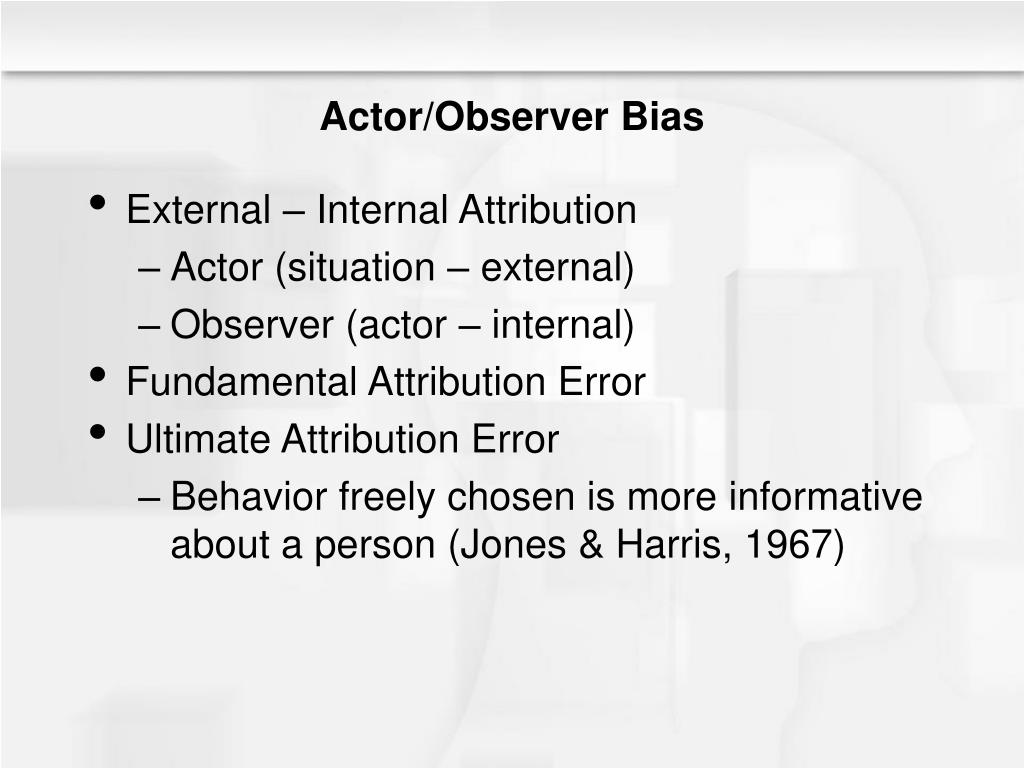

Masking, or blinding, helps you make sure that both your participants and your observers are unaware of the research aims. Note that, while you can try to reduce observer bias, you may not be able to fully eliminate it from your study. It’s important to design research in a way that minimizes observer bias.
#Actor observer bias manual
Example: Observer driftOver time, you begin to flag only extremely high blood pressure measurements as “high,” even though your instruction manual gives different guidelines for interpreting blood pressure. Observer drift happens when observers depart from the standard procedures in set ways and therefore rate the same events differently over time. Observer driftĪs you collect data, you become more familiar with the procedures and you might become less careful when taking or recording measurements. When recording measurements, you tend to round blood pressure up to the nearest whole number, while your colleague rounds down.Ī lack of training, poor control, and inadequate procedures or protocols may lead to systematic errors from observer bias. Example: Objective methodsYou measure blood pressure in parents using a blood pressure monitor. That’s because people have a tendency to interpret readings differently, so results can vary between observers in a study. Observer bias may still influence your study even when you use more objective methods (e.g., physiological devices, medical images) for measurement. There’s a risk you may be subconsciously primed to see only what you expect to observe. Your expectations about the research may lead to skewed results.

Your colleague, however, disagrees, finding that most of their exchanges seemed unfriendly. You note down and interpret different types of interactions between the children and conclude that they spent most of the time sharing the toy and having positive interactions. The children are paired up and given one new toy, and you and another researcher observe how often they share or take turns playing with it. Example: Subjective methodsYou perform an observational study to investigate how young children interact with a new toy. They may lead you to note some observations as relevant while ignoring other equally important observations. In any research involving others, your own experiences, habits, or emotions can influence how you perceive and interpret others’ behaviors. Subjective research methods involve some type of interpretation before you record the observations. Observer bias can occur regardless of whether you use qualitative or quantitative research methods. Observational studies are used in many research fields, including medicine, psychology, behavioral science, and ethnography.

In observational studies, you often record behaviors or take measurements from participants without trying to influence the outcomes or the situation.


 0 kommentar(er)
0 kommentar(er)
